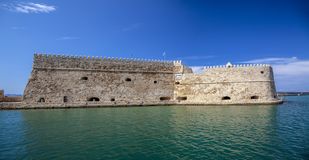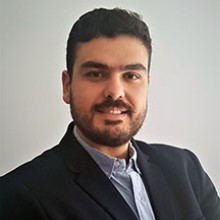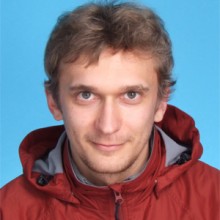

The Research work performed by the group of Photonics for Heritage Science in collaboration with European partners within the EU project HERACLES (HEritage Resilience Against CLimate Events on Site, Horizon 2020-DRS-11-2015-700395), was featured in Euronews "Futuris" broadcast. The project focuses on several monuments scattered across the Mediteranean sea are being constantly attacked by the sea and climate. Among the endangered ones is the Venecian fortress that poses at the entrance of Herakleion the hometown of FORTH. The HERACLES project aims to develop, apply and establish responsive methodologies and systems towards the mitigation of the impact caused due to climate changes on the monuments.
One of the HERACLES tasks, implemented by the research group of Photonics for Heritage Science of IESL-FORTH, is to develop a diagnostic methodology, based on optical and laser based portable instrumentation, which will closely observe the generation and evolution of surface deterioration products on the basis of remote monitoring and mapping and in correlation with environmental data and in-situ characterization of materials.
The methodology is initially designed on two of the HERACLES test beds; the Palace of Knossos and the Venetian coastal fortress of Koules. Both monuments located in the city of Heraklion, Crete, Greece are representative of important historical eras, involve a number of construction materials and are subjected to various climatic conditions. This methodology, directly connected with the HERACLES ICT platform for responsive monitoring of the studied test‐beds, is envisaged to be broadly implemented in the future to other CH monuments.

Education
- 2016 – Present PhD candidate in Department of Materials Science and Technology, University of Crete, & at UNIS Laboratory of IESL-FORTH.
- 2016, M.Sc. in Optics and Vision, School of Medicine, University of Crete, Greece.
- 2014, B.Sc. in Physics, Dept. of Physics, University of Crete, Greece.
Awards/Prizes/Distinctions
- Awarded a full PhD scholarship from Hellenic Foundation for Research and Innovation [H.F.R.I., ΕΛ.ΙΔ.Ε.Κ]
Education
- 2019 PhD in Physics, University of Crete, Greece
- 2014 MSc in Microelectronics and Optoelectronics , University of Crete, Greece
- 2011 BSc in Physics, University of Crete, Greece
Other
Educational Experience
- 2011–2012 Teaching Assistant in Optics Laboratory, Physics Department, University of Crete.
- 2010–2014 Physics Private Tutoring
Computer Skills
- Operating Systems: Linux, Windows
- Programming languages: Mathematica, Fortran, Matlab
- Scientific Programs: Igor, Winspec, AgilentV, LATEX, Surfer, Grapher, RES2DINV
Languages
- Greek Mothertongue
- English Advanced Full Proficiency
- French Advanced Full Proficiency
- Polish Basic Basic words and phrases only
- Spanish Beginner Currently studying




